MAMARONECK, N.Y. — It’s early afternoon on Wednesday at the U.S. Open and two teenage phenoms are putting on the 9th green of Winged Foot’s West Course. It’s worth clarifying that the first, Rory McIlroy, is actually a former phenom; he’s now 31 and a new father. But the second, Rasmus Højgaard, is currently the best male teenage golfer on the planet. After a whirlwind stretch on the European Tour, the 19-year-old has ascended to World No. 66, one spot ahead of another noted former phenom: Jordan Spieth.
Seeing McIlroy and Højgaard together, I do a double take. Just a week earlier, I’d spoken to Højgaard at his home in Denmark, where he mentioned, among other things, that he hoped one day to play a practice round with his boyhood idol, Rory McIlroy. Now here he was, doing just that! After a moment’s consideration, I realized I shouldn’t have been surprised. Højgaard has a way of making his dreams happen — and fast.
Oh, and the rest of that conversation? Here’s how it went down.
Dethier: Let’s start at the beginning — and luckily, for you, the beginning isn’t even that long ago, so you should remember it well. What’s your earliest golf memory? Do you remember the first time you played golf?
Rasmus Højgaard: I do. I think I was four years old at that time, and my dad wanted to spend a bit more time with his kids, so he took Nicolai and I to the golf course when we were four years old and we tried for the first time there.
So where did you guys play growing up?
There’s a golf course five minutes from where we live. So we’ve been members of that ever since. Just practicing, playing, spending time there.
What’s Denmark’s golf culture like? There have been several successful pros from Denmark, but is golf a popular sport there in general?
Golf in Denmark is starting to get more popular, and it’s starting to become a more normal sport for people to play. It feels like the sport is growing and that it’s being watched by more and more people. I think we are up to 200,000 golfers or so. That’s not very many compared to the U.S., but is it starting to grow. We always had a great golf community and a welcoming place to learn.
Growing up, did you have any golf heroes? Who did you like to watch?
I watched quite a lot of golf growing up, and Rory McIlroy is my favorite player. I’m a big fan of Tiger as well, but I never saw him in his prime, so it’s hard for me to feel as strongly. I mean, he’s obviously made a good comeback and he’s a world-class player. But I’ve always looked at Rory as my favorite player and I just like the way he plays.
That’s right — you were born right in Tiger’s prime, so it makes sense. What do you like about Rory?
Rory’s just…first of all, I like his swing. I like the way he can drive the ball. Just more or less the way he plays. He’s good at controlling his ball, and he looks like a proper athlete, and he takes care of his body. He’s just kind of the perfect player.
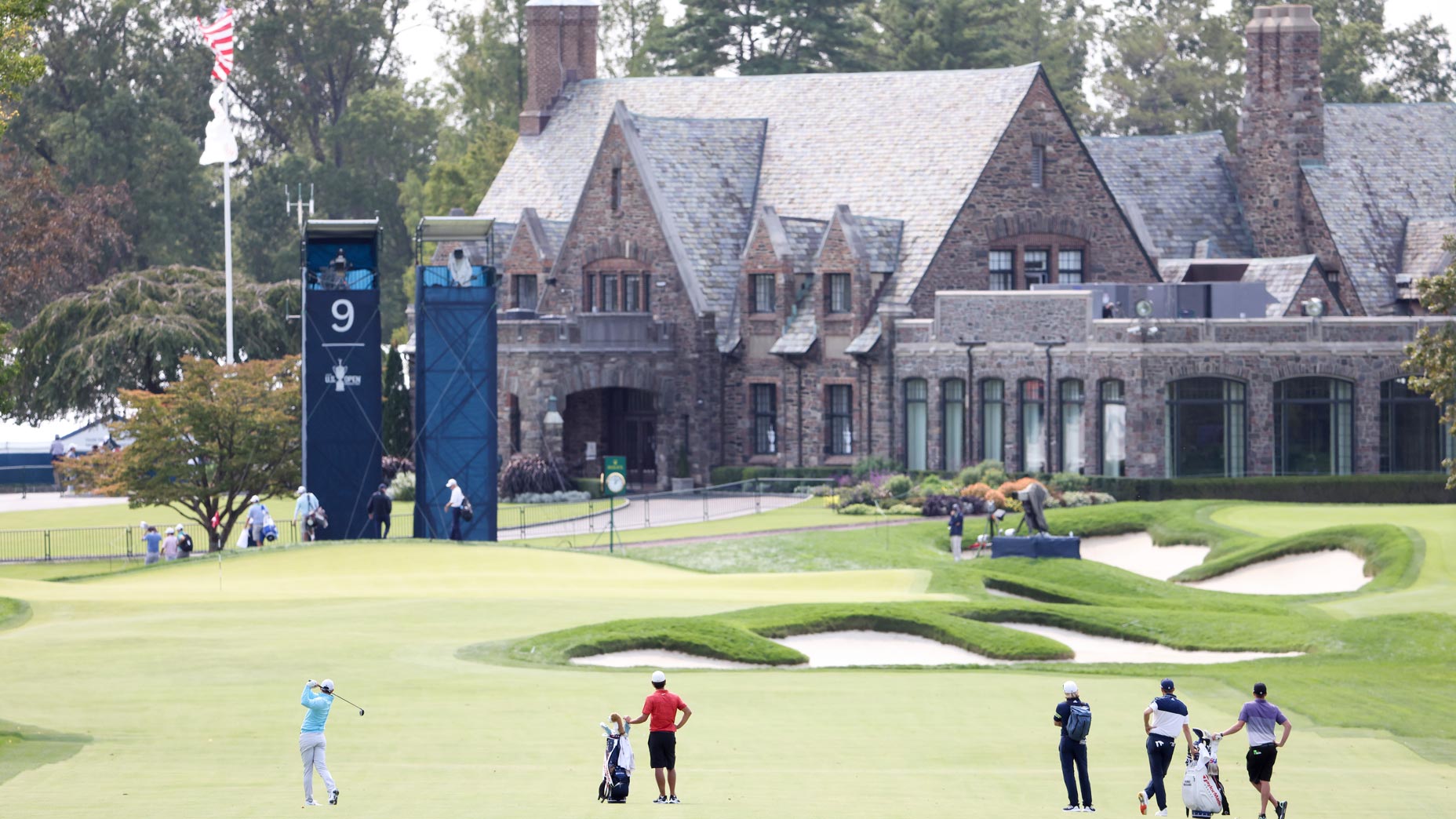
After their round, I borrow McIlroy for a moment of his time and tell him I promise not to ask him any questions about himself, which seems to put him at ease. What does he think of Højgaard’s game? “It’s really impressive,” he says. “Strong and steady.”
Asked to reflect on that same period in his own life, McIlroy grins. “I was just pretty much getting by on raw talent,” he says. “Rasmus knows what he’s doing.” McIlroy’s been watching from afar as Højgaard has made a name for himself these last few months, though in some ways he’s returning the favor: Højgaard has been watching McIlroy from afar for most of his life.
When you were growing up, did you play a lot of other sports? Or was golf your first and only love?
I started swimming, which was mandatory by my parents. Then I started to really love football, I enjoyed playing that for many years [Ed. note for our American readers: that’s “football” as in soccer!]. Then I got into handball and really enjoyed that as well, so I had football as my summer sport and handball as my winter sport. And then suddenly I got into golf as well, which made me quit football, because I wanted to play golf during the summer and handball in the winter.
Then I got the idea that I had to try badminton as well. So I tried that for a year. Oh, and I went to play a bit of table tennis as well, for a couple years. So I’ve played a few sports, yeah. But obviously once I became 11, 12 years old, golf became my favorite sport.
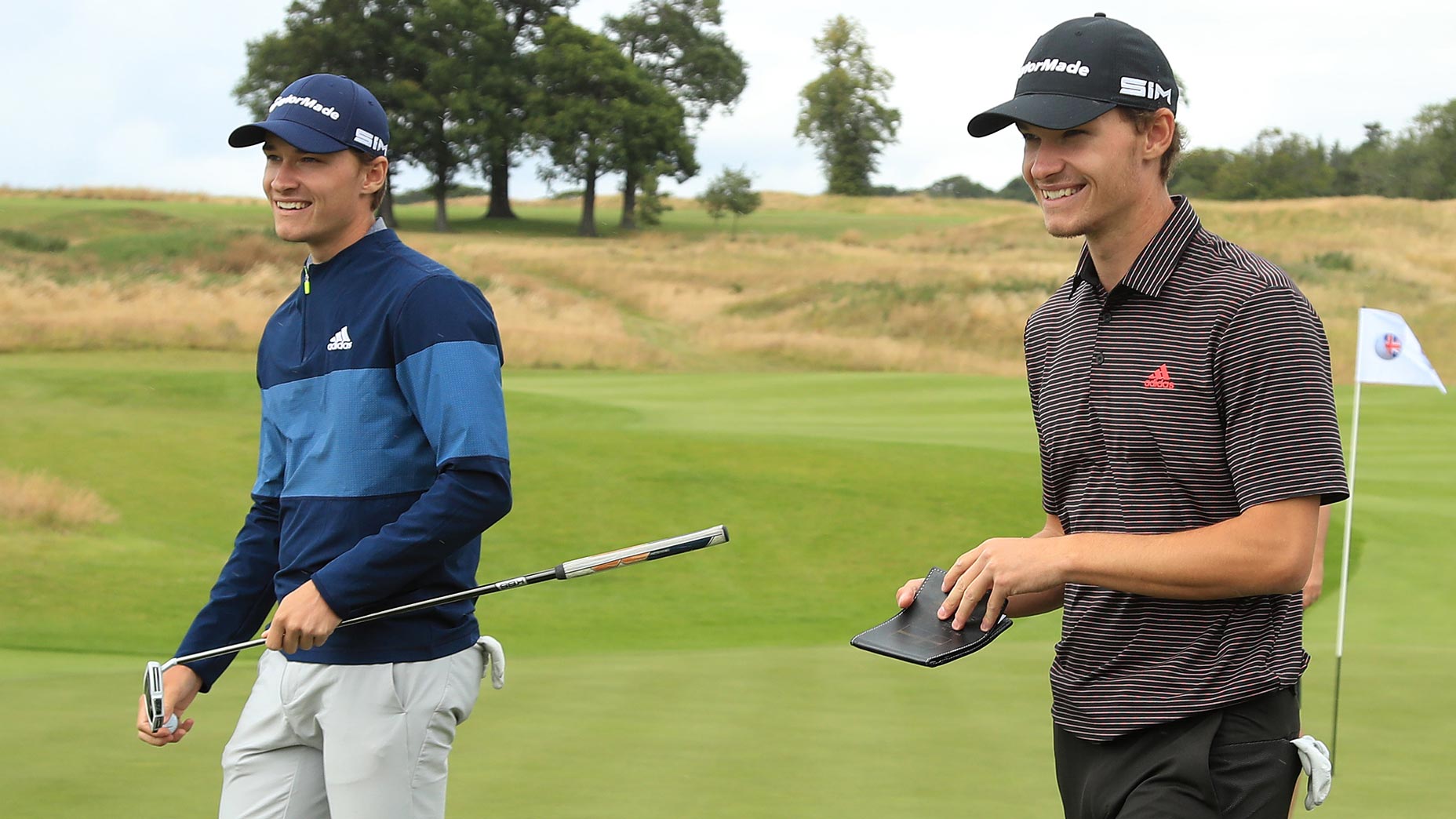
So it was around 11 or 12 that you really sort of specialized in golf.
Yeah, I still had the handball during the winter, but my dad told me and Nicolai to pick a sport and then to focus on that sport. It was hard for us to give up handball. I was 14 or 15 when I quit, because I broke my collarbone during a game and then I thought, okay, it’s probably a sign that I need to start now and then focus on golf.
Do you think that being a multi-sport athlete helped you ultimately become a good golfer? Does hitting a topspin winner or a spinny drop shot in table tennis translate to the course in any way?
I’d say table tennis and badminton a little bit. When you’re hitting a forehand in table tennis you’re kind of doing the same motion as when you’re trying to get to impact in golf. And in badminton you have to be really explosive, which I can use in my golf swing as well.
You mentioned enjoying being on a team in handball; scroll through your Instagram and you’ll see that so many of the golf pictures that you put up are from events with your teammates: Danish teams, junior teams. What are some fond memories you have of playing golf in a team setting?
In Denmark, we have what’s called division golf. So we play for clubs versus other clubs. So Nicolai and I, we got onto the team when we were maybe 12 or 13, not the first team but probably the second or third team, just to try it out. That was the first time we played golf as a team sport.
And when we got older, around 15, we got selected for the national team. And when they had to pick a team for the European Championships, I got selected — that was pretty huge at the time. There’s always something special about being a team because you can share it with other players, other people. You’re not just playing for yourself, so it kind of motivates you a little bit more. You have to play for your country, but also for your teammates.
Your brother Nikolai was on a lot of these teams, right?
Yeah, we were. There was one team event we didn’t play together, when he didn’t get selected for the national team for that European team championship when we were 16, maybe. Otherwise, we’ve been on the same team ever since, which is pretty cool.
Somehow we’ve gotten this far without really mentioning Nicolai Højgaard, Rasmus’ twin brother. The two have been lifelong teammates; they burst onto the world stage by leading Denmark to the 2018 World Amateur Team Championship, making eight combined birdies on the final nine to edge the U.S. team by one. They partnered at the 2018 Junior Ryder Cup, too. One day they hope to pair up at the main event.
It was Nicolai, not Rasmus, who made the first big splash on the European Tour; in just his second event as a pro, he finished solo second at the 2019 KLM Open, a shot behind Sergio Garcia. Unlike Rasmus, Nicolai has also already played in a major — he won the 2018 European Amateur and qualified for that summer’s Open Championship at Carnoustie.
Rasmus has overtaken him in the world rankings since — Nicolai has hit a rough patch on the European Tour and slipped to No. 479 — but that push and pull is nothing new; they’ve traded off their respective good and bad years since they first started playing.
So, tell me a little bit about your brother. What’s he like? How is he similar and different from you?
I mean, we’re pretty similar. We have the same interests outside of golf, too. We played the same sports, we played on the same teams in handball and football and table tennis. So it’s always hard to tell the difference between us from the inside; someone from the outside can actually see it better. I don’t actually know what to say the difference would be.
How do people tell you apart? Can people tell you apart?
It’s hard, when they see us the first time. We always used to say, “Just look at the hair!” But then suddenly we got the same hairstyle. So we kind of make it difficult for people.
I think there is something, that maybe I have a more square face and Nicolai has a more round face or whatever. But again, it’s easier for people from the outside to tell the differences, because I don’t really know.
Golf can be a team sport, but more often it’s so individual. What’s it like to support each other when one of you is on a really high high and the other is having a tougher time?
Well, the good thing about being on teams together and what we have achieved together is we can always look back at those events and always have something to talk about, even if we play all these different events.
But we can always kind of motivate each other. If one of us has played well, it definitely motivates the other one to play better next time, although we try not to compare. I know when Nicolai had a good year in 2018, I didn’t have a bad year. But if I compared to myself to Nicolai, I wouldn’t have felt good. So for me, I looked at what Nicolai did well from that period and tried to see if there was something I could put into my game.
So we can always feed off each other a little bit, which is probably one of the reasons why we got to this level.
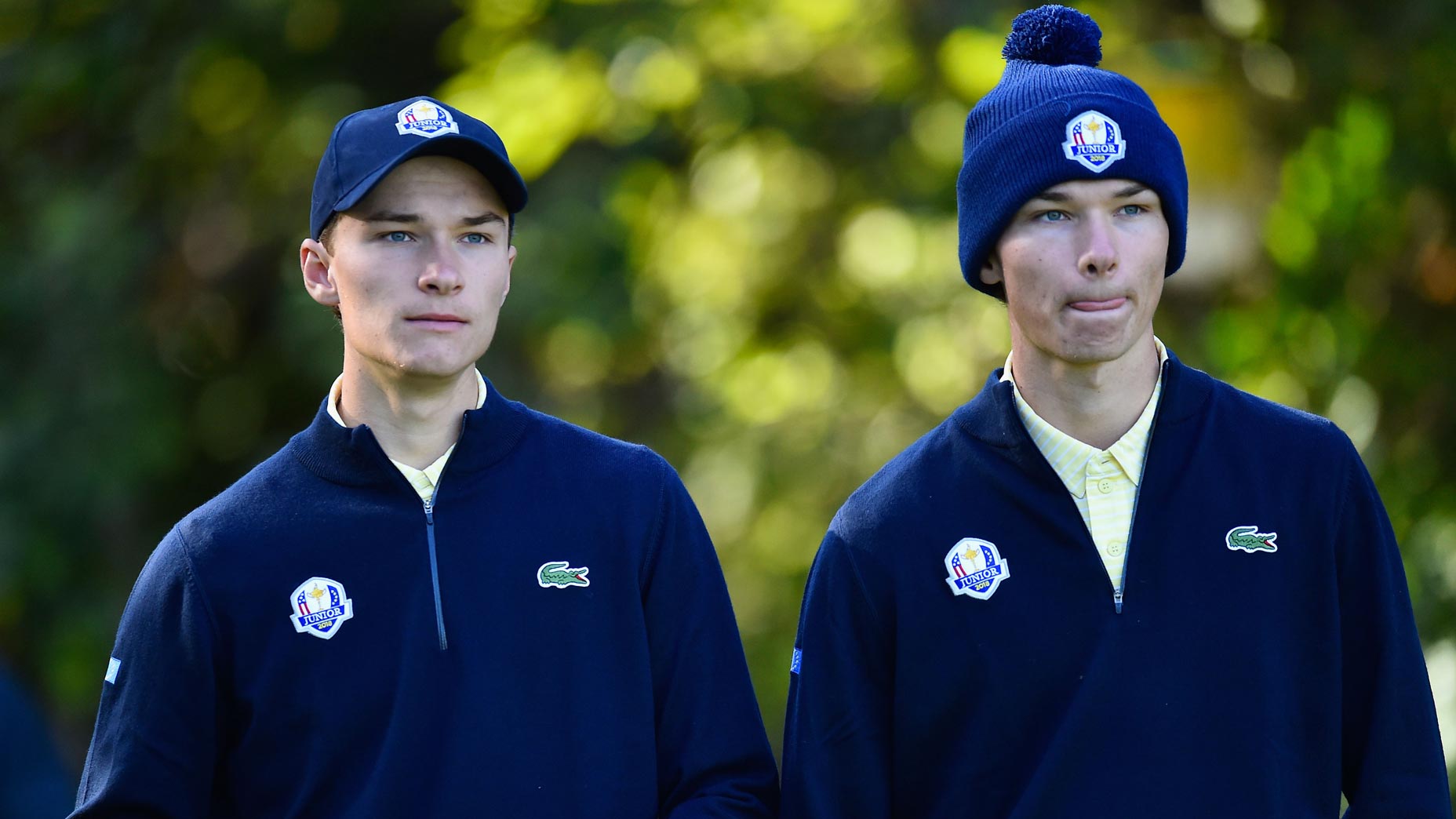
After his practice round, I ask Hojgaard what it was like to actually be out there with McIlroy. “I was nervous,” he said. “I really couldn’t get comfortable at first.” His caddie Jonathan Smart had made the connection with McIlroy’s caddie, Harry Diamond, to set up the practice round. Winged Foot is quiet, particularly away from the clubhouse, so it was just five of them trekking the front nine: McIlroy, Diamond, Højgaard, Smart and Martin Kold, Hojgaard’s coach (and the coach of the Danish national team).
Eventually, Højgaard says, he settled down. McIlroy went out of his way to chat, to check in, even to offer some advice. “He just told me to trust in what got me here,” Højgaard said. “I don’t have to make any crazy changes now that I’m here. Just be myself.”
I’m wondering if you have any advice for parents of junior golfers. Take a parent that has a 5-year-old that likes to play golf and they say, “Oh, man, I want my child to be a star golfer.” What would you tell them?
Most of all, the kid needs to have some interest and see golf as an exciting sport. You can’t really force anyone into playing golf because they won’t have fun. Golf is a sport people can enjoy even when they’re hitting shots sideways 20 times a round — but not everybody does. So don’t force your kid to play golf, because he or she is not going to enjoy it.
Is that the approach that your parents took, for the most part? Encouraging and then eventually had you pick a sport?
Yeah, I think when it came time to pick a sport, we could see that we probably had a better chance of making it in golf than in the others. So we both know that we had to play golf, but it was just hard to let go of those team sports.
When we were 14 or 15, we didn’t practice that much during the winter. It was always different hobbies; playing on the computer, hanging out with friends, doing all these different sports. But my dad probably wasn’t always into that. [Laughs] He wanted us to play more golf and to practice more. So, he kind of pushed us towards it, but he never forced us to it. I just think he was trying to motivate us just to become better.
Well, I’m sure you guys also want to get better, but sometimes it’s hard to get away from the computer…
Yeah, it is!
And what type of stuff do you like to do now, away from the course? Because you can’t play golf all day and all night. What do you do to stay entertained?
I do like to hang out with my friends when I have the time to do it. I don’t see them that much, so I’ll try to see them as much as I can when I’m home. I like to play a bit of computer with some of my friends as well.
What’s your favorite game?
Counter-Strike. So we play that quite a lot.
Do you still live in the same house that you grew up in?
Yeah, we lived five minutes away until we were 5 years old, and then we moved to this house. So pretty much, yeah.
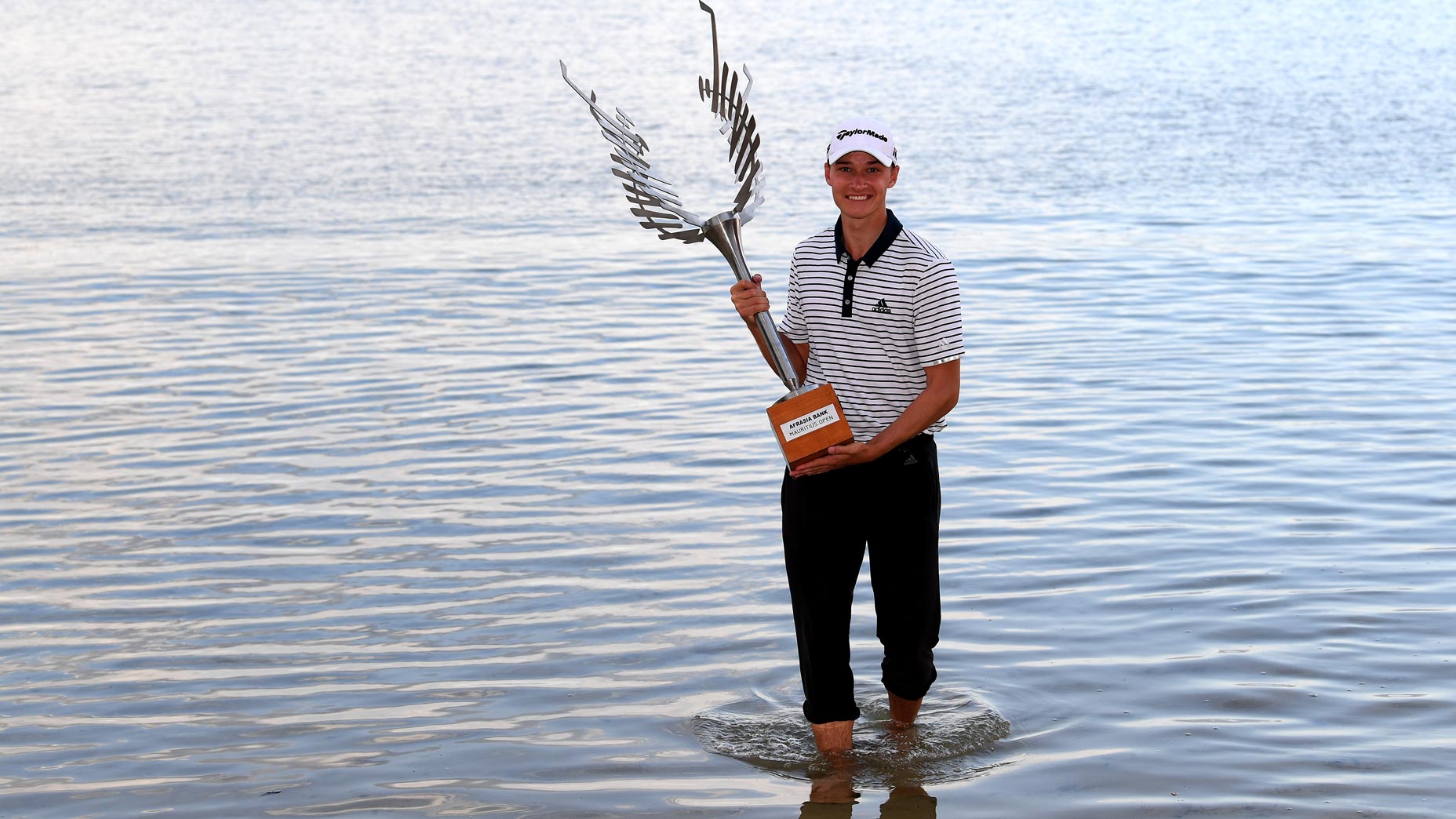
Højgaard turned pro at the start of 2019 and played a mix of Nordic Golf League, Challenge Tour and European Tour events. The graduation from one tour to the next went faster than anybody thought, and in December, his career changed forever. Højgaard emerged from a tense three-man playoff at the Mauritius Open to become the first player born after the year 2000 to win on the European or PGA Tours.
If Hojgaard picked up momentum or confidence from his victory, it took a little while to show; he missed his first four cuts of 2020, then finished T6, then missed another cut. After that, the coronavirus forced the European Tour into hiatus.
During the surprise offseason, something clicked. In his first start back, he finished second. Then T6. Then third. Then, at the UK Championship, he won again. One thing became clear: Rasmus Hojgaard is here to stay.
What was the first time that you felt like, “Hey, wait a minute. I can’t just make the European Tour, but I can really contend out here?” Did you always have that feeling, or was it not until you really got on the Euro Tour full time?
I felt it a little bit last year; I had a good consistent year on the Challenge Tour and finished No. 21 on the order of merit. So I felt like that was a good first year as a professional, I felt confident going to Q-school at the end of the year.
And when I got my card there, I really had this feeling that I could actually belong on tour. I stopped worrying about whether I could make it there and just got ready to compete. But I don’t know if I expected things to go as fast as they have.
Take me through that first win. What were you feeling in contention that week? What do you think of it when you look back now?
Yeah, of course. Coming into the tournament, I didn’t know what to expect, but I was sharing a room with one of my good friends, Benjamin Poke. We kind of said to each other, okay, perfect — last tournament of the year. Let’s have some fun and we can go on Christmas vacation.
But then I came off a good start. I played well the first day, kept it going the second round and then the third round as well. But I never really thought about actually winning until probably after the second hole in the final round. It was weird, because normally when I’m in contention, I always get those thoughts before the final day. What if I win? Which is probably normal. But I didn’t have that at that tournament.
And then I started birdie-eagle in the final round. I was two ahead and I said, okay, I actually have a chance to win. And all the nerves came straight away.
What’s your personality like in big moments on the course?
I get told by other people that I look very calm, and it may look that way, but that’s not how it is on the inside. Still, when I’m in contention, I’m not trying to do anything different than what I’ve done the first two or three rounds; I’m trying to go through the same process, to hit the same shot. I’m just trying to be very focused on what’s ahead of me, what shot I’m going to hit and all that.
Do you really just take this all in stride? Or have there been any moments that have just been, you know, pinch-yourself surreal?
There was one moment where I thought, well, this is pretty crazy, but I wasn’t even playing the tournament. I was at the Open in 2018 [watching Nicolai] and just had this really surreal experience at the range.
It was all quiet and suddenly we can hear far, far away there’s a bit of noise. And then the noise just came closer and closer and then suddenly there was Tiger Woods! And there were 2,000 people surrounding him and suddenly there were 25 cameras on him. And he’s just hitting balls on the range and players around him are stopping just to watch him hit some balls.
And then he walked out again — and it was all quiet again. That was a bit surreal just to see, just what impact he has on golf.
So is it strange, then, to think that you’re going to be playing golf against him? You’re going to be playing golf against Rory McIlroy?
Yeah, I mean, that’s the goal: Play against the best players. I really want to play a practice round with with Rory at the U.S. Open, actually, just to see the way that he gets around courses and major golf. So hopefully we’ll fit that in.
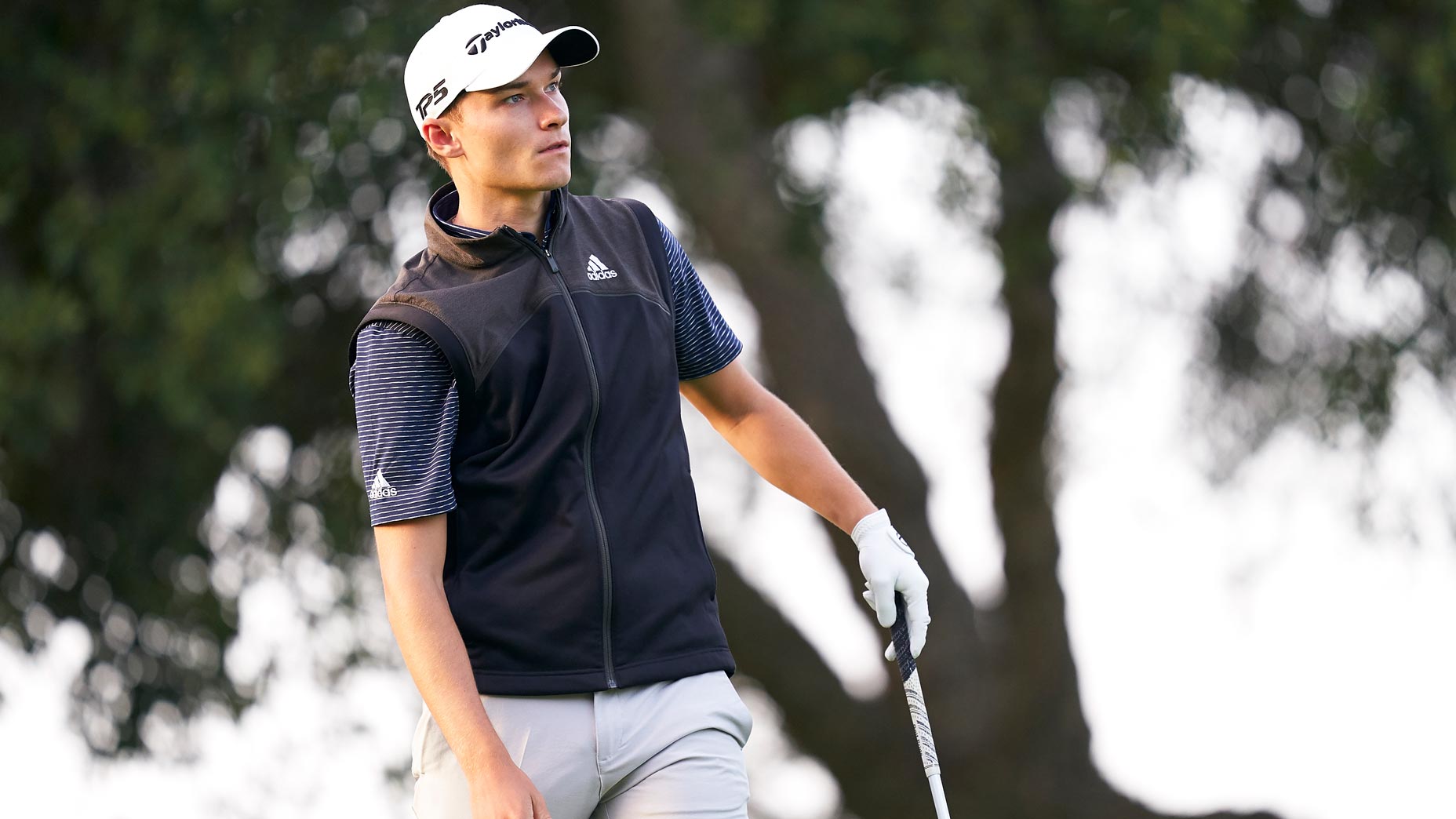
With success comes sponsors, and a couple of big-name brands adorn Hojgaard’s gear when he’s on the course: Adidas on his shirt, TaylorMade on his hat, Adidas on his shoes, TaylorMade on his bag. He’s eager to talk about the other Adidas athletes in the golf world; he’s eager to be on the same team, of sorts. He’s always loved being on a team.
I’m more into dark clothes; I don’t wear white trousers that much. Black, grey — I don’t know why, but I always wore mostly those colors in my amateur years, too. But it’s cool, I mean, it seems like everyone who’s a part of the Adidas team is kind of athletic-looking. It’s hard to explain it, but Adidas has a lot of athletic players.
Look at D.J., who’s a perfect example, and he’s doing quite well. It’s anybody’s goal to be in the same company as him. There’s so many players — Jon Rahm, Xander Schauffele, Sergio Garcia, I don’t even want to list them because there are so many. It’s pretty cool to be wearing the same logos as all those guys, who are so fun to watch.
All right, last question. I’m curious about your your goals. Do you have specific accomplishments in mind that you write down — big tournament wins, world rankings, etc.? Or do you just take things as they come?
Obviously have these goals in the end: To be the best golfer in the world, to reach world No. 1, to win a major, to become a part of the Ryder Cup team and all these different things. But I always kind of set goals on the way up.
What I want to do right now would to get into the top 50, which would get me access to all these different tournaments. That’s my goal at the moment: get into the top 50. And then to get all these parts of my game better at the same time, and then we can take on more goals after that.
